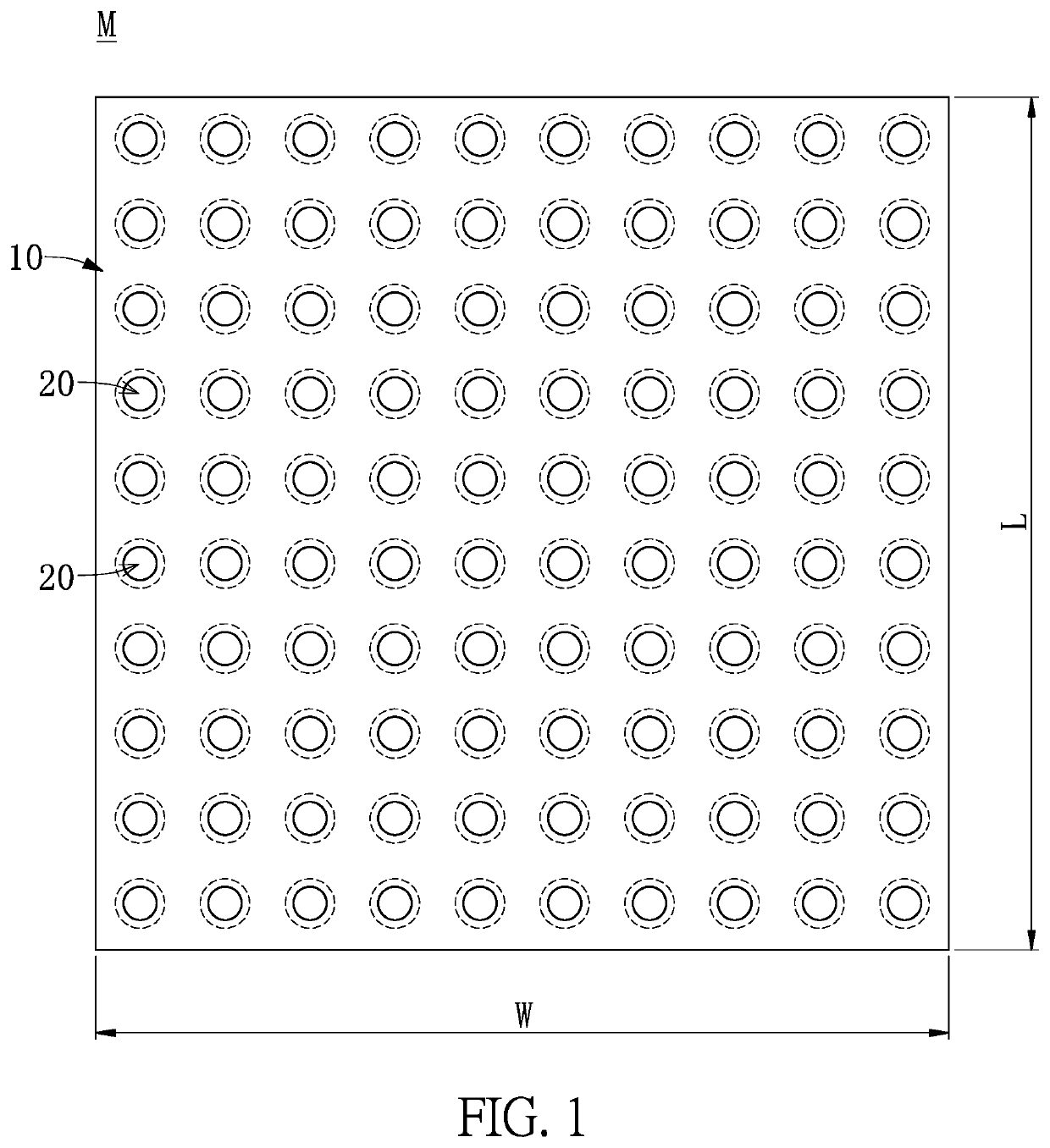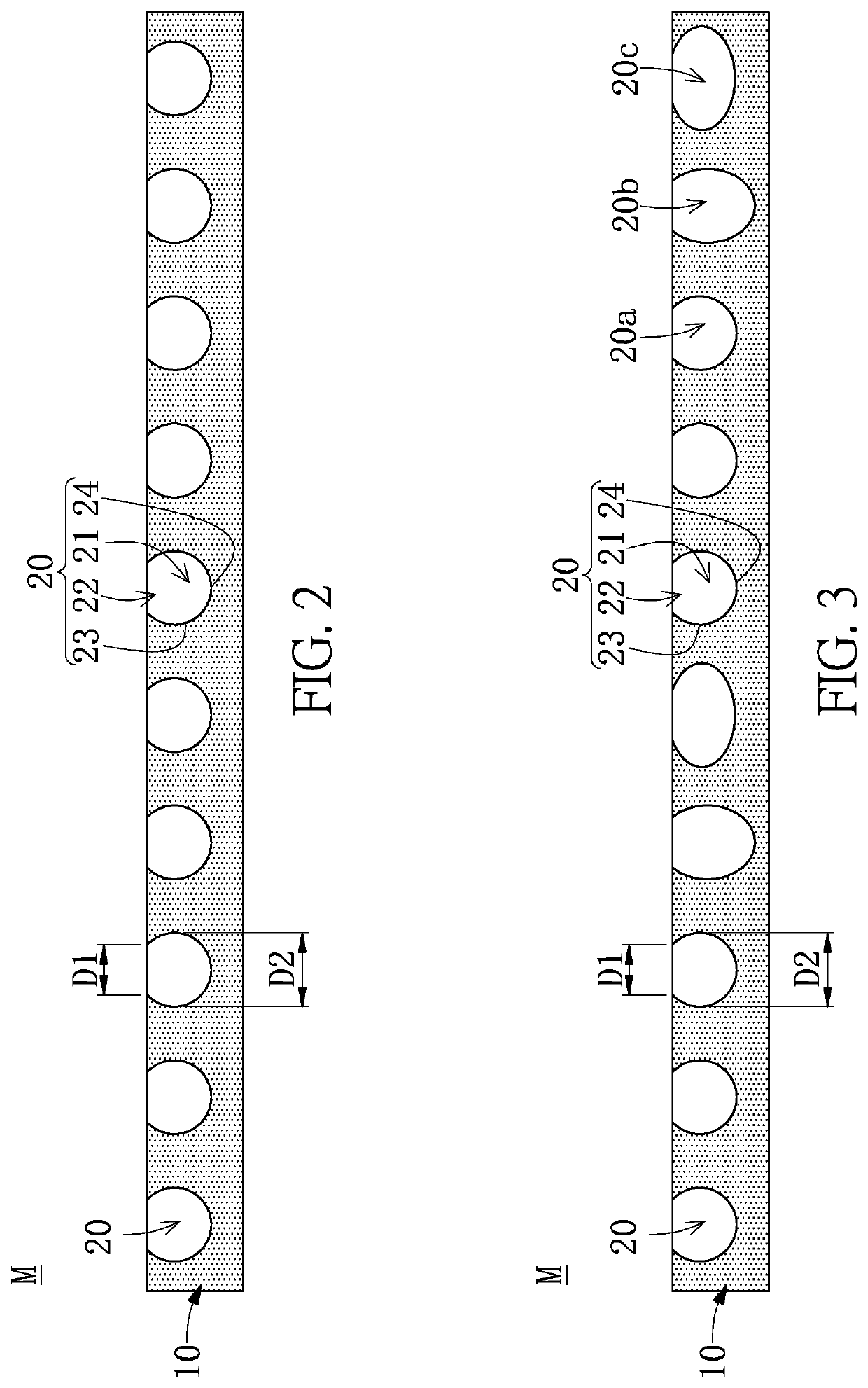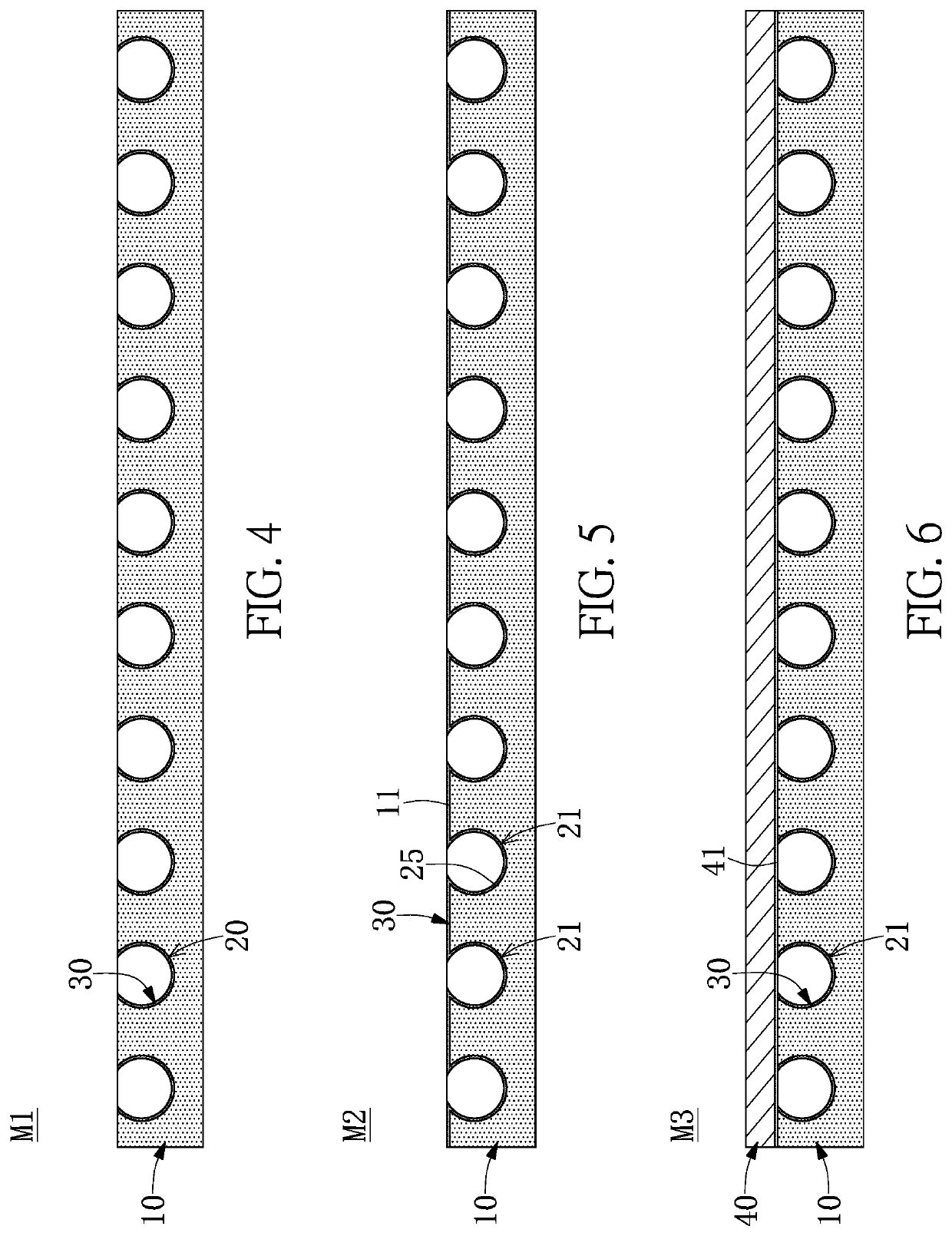Microwell device and method of manufacturing the same
a microwell and microwell technology, applied in bio laboratory glassware, chemistry apparatus and processes, etc., can solve the problems of loss of experimental data and burden on operators, and achieve the effect of effectively preventing cells from flowing
- Summary
- Abstract
- Description
- Claims
- Application Information
AI Technical Summary
Benefits of technology
Problems solved by technology
Method used
Image
Examples
first embodiment
[0051]Referring to FIG. 1 to FIG. 2, a first embodiment of the present disclosure provides a microwell device M including a substrate 10 and a plurality of microwells 20 formed on the substrate 10. Each of the microwells 20 includes a cavity 21 being recessed on the substrate 10 and an opening 22, and wherein the diameter D1 of the opening 22 is smaller than the largest inner diameter D2 of the cavity 21. In addition, the plurality of microwells 20 are curved.
[0052]Further, the material of the substrate 10 can, but not limited to being, poly(acrylamide), polydimethylsiloxane, poly(lactic-co-glycolic acid), gelatin, silicone, polydimethylsiloxane, polyethylene, polystyrene, polyolefin, polyolefin copolymers, polycarbonate, ethylene vinyl acetate, polypropylene, polysulfone, polytetrafluoroethylene (PTFE), compatible fluoropolymer, or poly(styrene-butadiene-styrene).
[0053]Referring to FIG. 1, the length L of the substrate 10 of the microwell device M of the present disclosure can be 1...
second embodiment
[0057]Referring to FIG. 7 to FIG. 13, a second embodiment of the present disclosure provides a method for manufacturing a microwell device M, which at least includes step S100 to step S110. Firstly, in step S100, a microcolumn array N having a plurality of microcolumns 70 is produced from a first template by photolithography or soft lithography. In addition, the microcolumn array N can be made of polydimethylsiloxane (PDMS). In step S102, after a lift-off layer 80 [1% bovine serum albumin (BSA) in phosphate-buffered saline (PBS)] is coated on the microcolumns array N, a plurality of glass microspheres 90 are disposed on each of the plurality of the microcolumns 70 of the microcolumn array N (step S104). Next, in step S106, silicon (fast-curing silicone) is poured onto the microcolumn array N being disposed with the glass microspheres 90, after curing, the cured silicone is separated from the microcolumn array N and the glass microspheres 90 to form a second template K having a plura...
third embodiment
[0061]The Madin-Darby canine kidney (MDCK) cells were cultured in the microwells of the microwell device (80 μm of the largest inner diameter) on an orbital shaker. The microwell device was perturbed sequentially using four 30 minutes sessions using different parameters: (1) at 100 rpm with microwells facing upward; (2) at 100 rpm with microwells facing downward; (3) at 200 rpm with microwells facing upward; and (4) at 200 rpm with microwells facing downward. Results from after step (1) and (4) are shown in FIG. 14 and FIG. 15, respectively. Over the 2 hours perturbation, only one microwell of MDCK cell (black border in FIG. 15) was lost out of 32 microwells (dashed box in FIGS. 14 and 15). Therefore, this embodiment shows that the microwells of the microwell device of the present disclosure can prevent cells from slipping out of the microwells.
PUM
 Login to View More
Login to View More Abstract
Description
Claims
Application Information
 Login to View More
Login to View More - R&D
- Intellectual Property
- Life Sciences
- Materials
- Tech Scout
- Unparalleled Data Quality
- Higher Quality Content
- 60% Fewer Hallucinations
Browse by: Latest US Patents, China's latest patents, Technical Efficacy Thesaurus, Application Domain, Technology Topic, Popular Technical Reports.
© 2025 PatSnap. All rights reserved.Legal|Privacy policy|Modern Slavery Act Transparency Statement|Sitemap|About US| Contact US: help@patsnap.com



